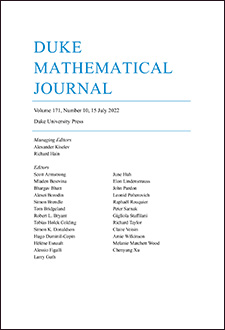Abstract
A family of permutations is said to be t-intersecting if any two permutations in agree on at least t points. It is said to be -intersection-free if no two permutations in agree on exactly points. If with , and is a bijection, then the π-star in is the family of all permutations that agree with π on S. An s-star is a π-star such that π is a bijection between sets of size s.
Friedgut and Pilpel, and independently the first author, showed that if is t-intersecting, and n is sufficiently large depending on t, then ; this proved a conjecture of Deza and Frankl from 1977.
Here, we prove a considerable strengthening of the Deza–Frankl conjecture, namely, that if n is sufficiently large depending on t, and is -intersection-free, then , with equality iff is a t-star.
The main ingredient of our proof is a “junta approximation” result, namely, that any -intersection-free family of permutations is essentially contained in a t-intersecting junta (a “junta” being a union of boundedly many -stars). The proof of our junta approximation result relies, in turn, on (i) a weak regularity lemma for families of permutations (which outputs a junta whose stars are intersected by in a weakly pseudorandom way), (ii) a combinatorial argument that “bootstraps” the weak notion of pseudorandomness into a stronger one, and finally (iii) a spectral argument for highly pseudorandom fractional families. Our proof employs four different notions of pseudorandomness, three being combinatorial in nature and one being algebraic. The connection we demonstrate between these notions of pseudorandomness may find further applications.
Citation
David Ellis. Noam Lifshitz. "Approximation by juntas in the symmetric group, and forbidden intersection problems." Duke Math. J. 171 (7) 1417 - 1467, 15 May 2022. https://doi.org/10.1215/00127094-2021-0050
Information





